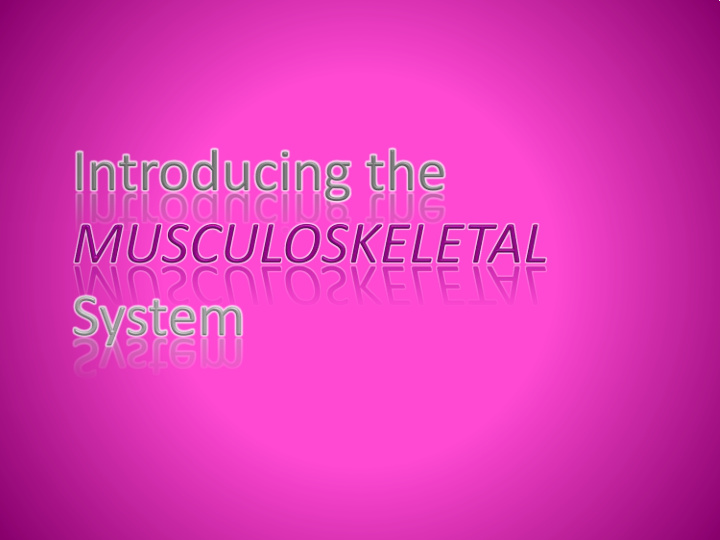



Any questions for a scientist? Ask your parents to email us! sarah.gundy@nuigalway.ie Unit 5A: Ke e ping He a lthy
Muscles
Skull Clavicle Scapula (shoulder blade) Rib cage Humerus Spine Ulna Radius Pelvis Femur Patella Tibia Fibula
You have: 300 bones at birth 206 bones by Where do they adulthood go?
Give Protect vital Make blood structure & Movement organs cells support
Muscles Bones are unable to move by themselves biceps triceps Muscles move Muscles tend to bones by occur in pairs, i.e. shortening, i.e. work in opposition contracting Muscles can only “pull” and do not “push” bones
As you bend your elbow and raise your hand slowly which muscle is contracting?
Most people have it 14% of people do not have it Palmaris Longus Was used years ago to flex the wrist Not needed anymore and can be removed Can be used to replace damaged tendons
Orthopedic cast Plates Surgery Pins
Engineering and medicine coming together to help improve people’s health Today you will be a Biomedical Engineer to repair a damaged tendon!
Step 1- Make a finger Straws (Bones) String (Tendons) The finger gets 3 straws that act as bones The finger gets 1 string that acts as the tendons Make sure you leave a big space between the straws!
Step 1- Make a finger Tape the string to the tip of the finger here Tape the 3 straws to the paper Do not tape the string! Bend the paper between the straws for the finger to move easier
Step 2- Damage and repair tendon Use your scissors to cut the string between two straws Repair your “tendon” using the “biomaterials” in your house
Do you think you fixed your tendon? Why or why not? If you were fixing the tendon again, what would you do differently?
Send us a photo of your tendons and biomaterials! Any questions for a scientist? Ask your parents to email us! sarah.gundy@nuigalway.ie Unit 5A: Ke e ping He a lthy
References: 1. commons.wikimedia.org 2. www.flickr.com 3. Gray’s Anatomy Acknowledgements: Sincere thanks to all of the researchers who gave lectures and generously gave their time throughout the course. Thanks also to all the participating teachers who very kindly shared ideas and resources.
This publication has emanated from research conducted with the financial support of Science Foundation Ireland (SFI) and is co-funded under the European Regional Development Fund under Grant Number 13/RC/2073. This project has been funded by the European Union Seventh Framework Programme under Marie Curie Initial Training Networks (FP7-PEOPLE-2012-ITN) and Grant Agreement Number 317304 (AngioMatTrain). This project has also been funded by the European Union Horizon 2020 Programme (H2020-MSCA-ITN-2015) under the Marie Skłodowska -Curie Innovative Training Networks and Grant Agreement Numbers 676408 (BrainMatTrain) and 676338 (Tendon Therapy Train).
Recommend
More recommend